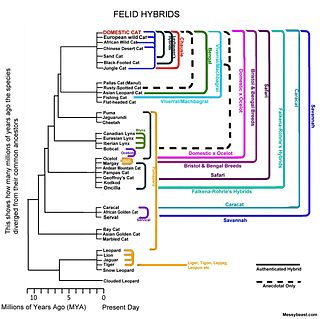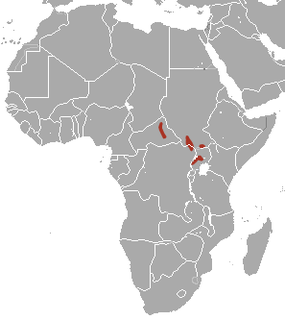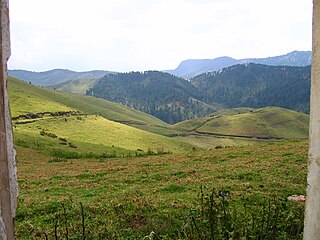
The serval is a wild cat native to Africa. It is rare in North Africa and the Sahel, but widespread in sub-Saharan countries, except rainforest regions. Across its range, it occurs in protected areas, and hunting it is either prohibited or regulated in range countries.

The caraval is the cross between a male caracal and a female serval. They have a spotted pattern similar to the serval, but on a darker background.

The Savannah is a hybrid cat breed. It results from a cross between a serval and a domestic cat. This hybridization typically produces large and lanky offspring with vibrant spotted coats.

A felid hybrid is any of a number of hybrids between various species of the cat family, Felidae. This article deals with hybrids between the species of the subfamily Felinae.

The Rheinmetall LandSysteme Light Infantry Vehicle for Special Operations, or LIV (SO), is a German light armoured utility vehicle based on the Mercedes-Benz G-Class. It is also known by the names Serval, Wolf, and AGF. As the name implies, the LIV (SO) is designed specifically for use by special operations forces, and has light armour, high mobility and high firepower. Development of the vehicle started in 2002, and 21 were procured by the German Army for the KSK special forces in 2004. An unspecified number of vehicles were delivered to the Swiss Army in 2007.

Guinea-Bissau is a West-African country rich in biodiversity.

The Bunyoro rabbit or Central African rabbit is a species of mammal in the family Leporidae. It is monotypic within the genus Poelagus. It is found in central Africa and its typical habitat is damp savannah, often with rocky outcrops.

Serval is a commune in the Aisne department in Hauts-de-France in northern France.

Gishwati Forest is a forest in the north-western part of Rwanda, not far from Lake Kivu. It is part of Gishwati–Mukura National Park. The area's forests were largely intact in 1978, and substantial forest cover still remained in 1986. During the Rwandan genocide, wave after wave of refugees arrived in Gishwati Forest and began clearing it, often for subsistence farming. By 2001, only a small circular patch of native forest remained, 1,500 acres (6.1 km2) of the forest’s original 250,000. In addition to tremendous loss of biodiversity, the region experiences soil erosion and degradation and landslides. Reforestation efforts in the past few years have increased the remnant native forest to about 2,500 acres (10 km2). Large tea estates occupy the central and northern parts of the reserve.
Mordellaria is a genus of tumbling flower beetles in the family Mordellidae. There are more than 10 described species in Mordellaria.
Mordellaria africana is a species of beetle in the genus Mordellaria of the family Mordellidae. It was described in 1956.
Mordellaria arakii is a species of beetle in the genus Mordellaria of the family Mordellidae. It was described in 1950.
Mordellaria aurofasciata is a species of beetle in the genus Mordellaria of the family Mordellidae. It was described in 1837.
Mordellaria binotata is a species of beetle in the genus Mordellaria of the family Mordellidae. It was described in 1995.
Mordellaria latior is a species of beetle in the genus Mordellaria of the family Mordellidae. It was described in 1967.
Mordellaria pulchella is a species of beetle in the genus Mordellaria of the family Mordellidae. It was described in 1954.
Mordellaria zenchii is a species of beetle in the genus Mordellaria of the family Mordellidae. It was described in 1953.
Mordellaria scripta is a species of beetle in the genus Mordellaria of the family Mordellidae. It was described in 1863.

Caracal is a genus in the subfamily Felinae of the family Felidae. It was proposed by John Edward Gray in 1843 who described a skin from the Cape of Good Hope in the collection of the Natural History Museum, London. Historically, it was considered to be a monotypic genus, consisting of only the type species: the caracal C. caracal.
A pet exotic felid, also called pet wild cat or pet non-domestic cat, is a member of the family Felidae kept as an exotic pet.










